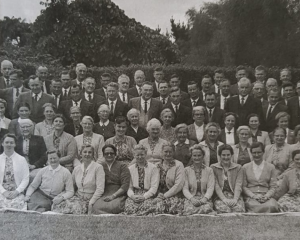It's a good thing they're quite small because in just a few years, there will be more Lego people on Earth than humans, according to calculations.
The first Lego minifigure was created in 1978 and since then more than four billion have been produced, making them - according to the company itself - the world's biggest population group.
Now, an American physics graduate behind online mathematical comic Xkcd.com has calculated that if this trend continues, the population of Lego figures will equal that of human beings by 2019.
And by the end of the decade, there will be more little plastic people on the planet than their creators.
This did not surprise University of Canterbury robot expert and self-confessed Lego fanatic Dr Christoph Bartneck, who said the ratio could well be similar in New Zealand.
"There's definitely a lot of popularity around Lego in New Zealand, as there is everywhere else on the planet," he said.
"You have so many different types of Lego people: I like to build Lego machines that actually work, but there are other people who are more into sculpting and landscaping, and there are others who are collectors. Then there are the players, the mini-figure people, the train people, the list goes on - you just have to find your own little obsession."
Dr Bartneck has published catalogues of all 6000 Lego figures released to date, some of which are very rare and can fetch thousands of dollars at auction.
"I don't own them all - I'm not that crazy - but I know people who do. I know one collector in the Netherlands who claims to have eight million Lego bricks, and I believe him," he said.
When they first emerged, Lego figures were all yellow and had smiling faces, but now include more realistic skin colours and a range of emotions - a high propoertion of which are angry faces.
Dr Bartneck, who earlier this year released a study on this phenomenon, said it reflected a growing focus on conflict in the popular toy.
"It seems to be a sign of the times that this is currently what is popular in toys and what sells."
Different skin colours from the standard Lego yellow were introduced in 2004.
- By Matthew Theunissen of APNZ
LEGO FACTS
- On average, every person on earth owns 86 Lego bricks.
- With a production of more than 500 million tyres in 2012, the Lego Group is one of the world's largest tyre manufacturers.
- If all Lego sets sold in 2012 were stacked on top of each other, they would fill a football field to a height of 206m - equivalent to a 62-storey building.
- Over the years, about 650 billion Lego elements have been manufactured.
- There are 915,103,765 possible ways to combine six eight-stud Lego bricks of the same colour.
Source: Lego












